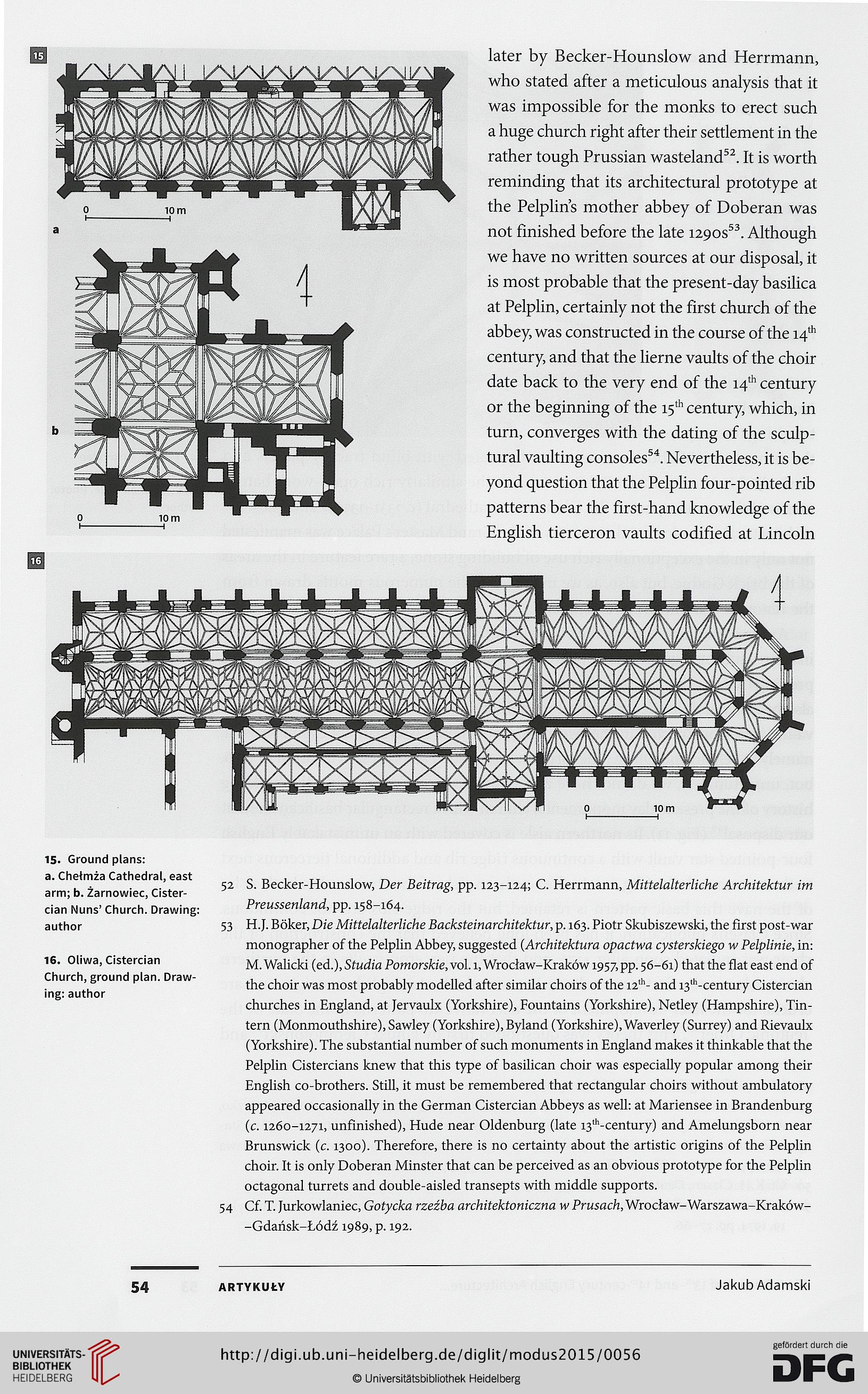later by Becker-Hounslow and Herrmann,
who stated after a meticulous analysis that it
was impossible for the monks to erect such
a huge church right after their settlement in the
rather tough Prussian wasteland^. It is worth
reminding that its architectural prototype at
the Pelplins mother abbey of Doberan was
not finished before the late i290S^. Although
we have no written sources at our disposal, it
is most probable that the present-day basilica
at Pelplin, certainly not the first church of the
abbey, was constructed in the course of the 14^
century, and that the lierne vaults of the choir
date back to the very end of the 14^ century
or the beginning of the 15^ century, which, in
turn, converges with the dating of the sculp-
tural vaulting consoles^. Nevertheless, it is be-
yond question that the Pelplin four-pointed rib
patterns bear the first-hand knowledge of the
English tierceron vaults codified at Lincoln
15. Ground plans:
a. Chełmża Cathedrat, east
arm; b. Żarnowiec, Cister-
cian Nuns' Church. Drawing:
author
16. Oiiwa, Cistercian
Church, ground ptan. Draw-
ing: author
52 S. Becker-Hounslow, Der Beifrag, pp. 123-124; C. Herrmann, Mittefaiterh'che Architektur ini
Preusseniand, pp. 158-164.
53 H J. Bóker, Die Mittefaiterh'che Bncks^zzinrc/izYek^Mr, p. 163. Piotr Skubiszewski, the first post-war
monographer of the Pelplin Abbey, suggested (Arc/izYektum opactwa cysterskiego w Pefpfinie, in:
M. Walicki (ed.), Studzą Pomorskie, vol. 1, Wroclaw-Kraków 1957, pp. 56-61) that the flat east end of
the choir was most probably modelled after similar choirs of the 12*- and 13'Kcentury Cistercian
churches in England, at Jervaulx (Yorkshire), Fountains (Yorkshire), Netley (Hampshire), Tin-
tern (Monmouthshire), Sawley (Yorkshire), Byland (Yorkshire), Waverley (Surrey) and Rievaulx
(Yorkshire). The substantial number of such monuments in England makes it thinkable that the
Pelplin Cistercians knew that this type of basilican choir was especially popular among their
English co-brothers. Still, it must be remembered that rectangular choirs without ambulatory
appeared occasionally in the German Cistercian Abbeys as well: at Mariensee in Brandenburg
(c. 1260-1271, unfinished), Hude near Oldenburg (late i3"'-century) and Amelungsborn near
Brunswick (c. 1300). Therefore, there is no certainty about the artistic origins of the Pelplin
choir. It is only Doberan Minster that can be perceived as an obvious prototype for the Pelplin
octagonal turrets and double-aisled transepts with middle supports.
54 Cf. T. furkowlaniec, Gotycka rzeźba architektoniczna w Prasach, Wrocław-Warszawa-Kraków-
-Gdańsk-Łódź 1989, p. 192.
54
ARTYKUŁY
Jakub Adamski




